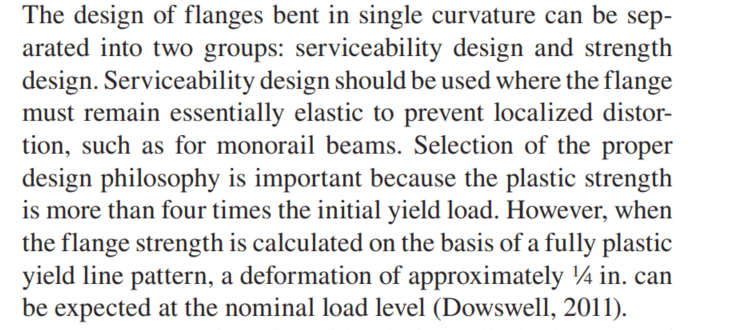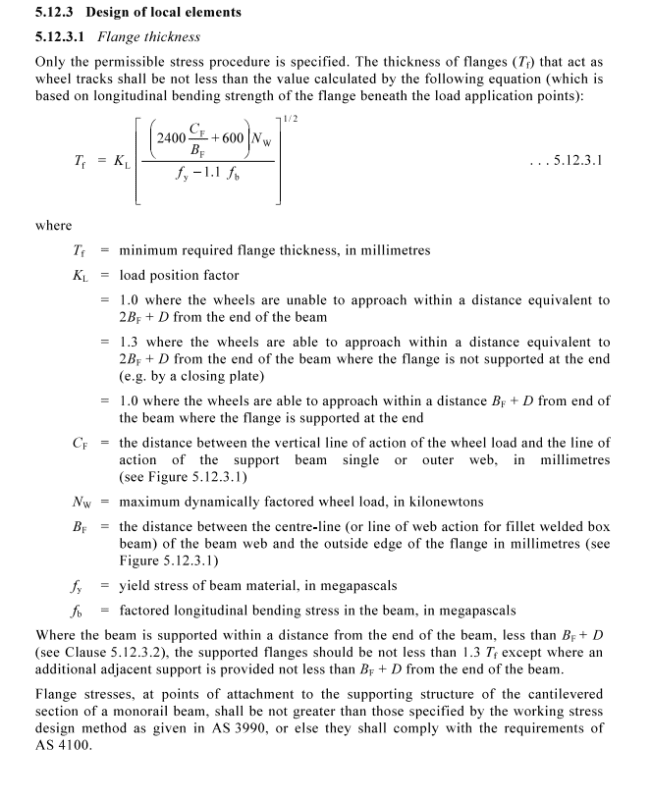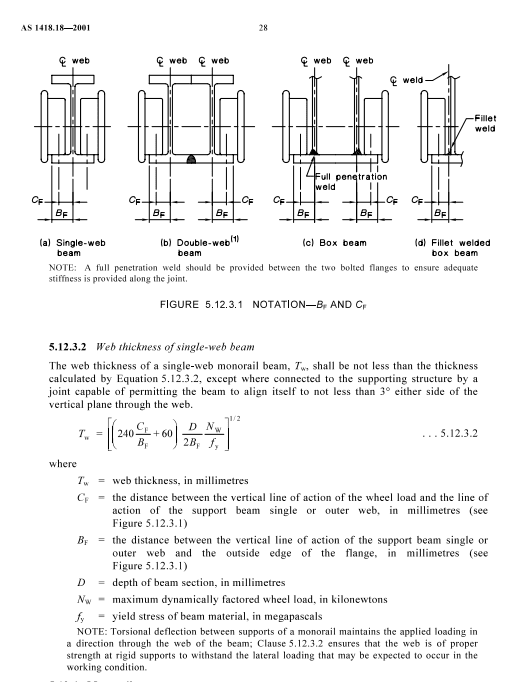Quick question for the experts out there.
Are the bottom flange local bending provisions in CMAA 74 mandatory for monorails in the US?
I am referring to the design of S-shapes with trolley hoists, not patented track or enclosed track.
As far as I can tell, there isn't a US spec that covers monorail design, other than the impact factors in ASCE 7-16.
ASME B30.11 "monorails and underhung cranes" points to CMAA 74 (not applicable to monorails), ANSI MH27.1 (applicable only to patented track monorails) and ANSI MH27.2 (applicable only to enclosed track monorails).
Are the bottom flange local bending provisions in CMAA 74 mandatory for monorails in the US?
I am referring to the design of S-shapes with trolley hoists, not patented track or enclosed track.
As far as I can tell, there isn't a US spec that covers monorail design, other than the impact factors in ASCE 7-16.
ASME B30.11 "monorails and underhung cranes" points to CMAA 74 (not applicable to monorails), ANSI MH27.1 (applicable only to patented track monorails) and ANSI MH27.2 (applicable only to enclosed track monorails).


![[ponder] [ponder] [ponder]](/data/assets/smilies/ponder.gif)


